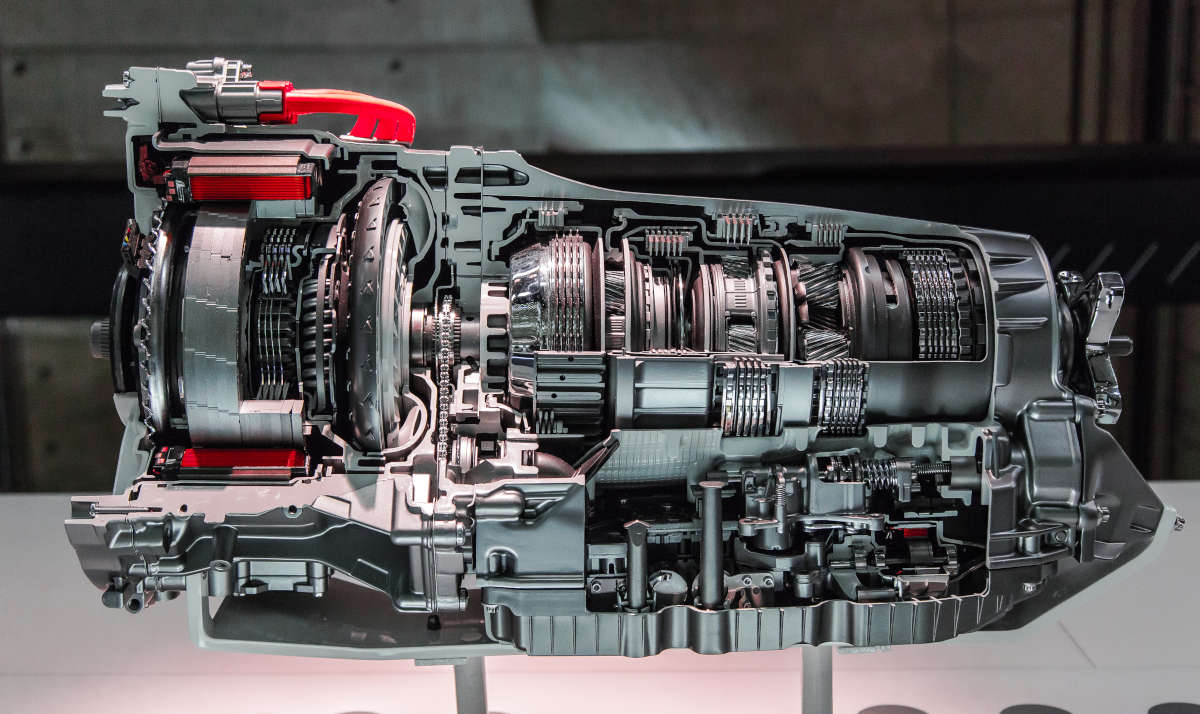
Compare Torque, Performance, Reliability, and Applications of the 4L80E and 4L85E Transmissions
Introduction
Choosing between the 4L80E and 4L85E transmissions requires more than just looking at torque figures. These GM heavy-duty units, both based on the TH400, are known for strength and electronic precision. But they differ significantly in internal gear construction and load capabilities. This article breaks down the core differences, similarities, known issues, and use cases to help you make the right choice.
What Is the 4L80E Transmission?
The 4L80E is an evolution of the Turbo Hydramatic 400, featuring electronic controls, overdrive, and a lock-up torque converter. It’s engineered for large vehicles and heavy-duty applications, and you’ll find it in models like the Chevrolet Silverado, Express vans, Hummer H1, and even luxury cars like Bentley and Rolls-Royce.
It’s important to remember that 4L80E-equipped vehicles are automatic, which raises the long-standing debate of manual vs automatic transmissions. You can explore our full manual vs automatic transmission comparison here.
What Is the 4L85E Transmission?
The 4L85E builds on the 4L80E, offering a torque rating of 690 lb-ft (compared to 440 lb-ft) and a five-pinion planetary gearset for added strength. It’s designed to handle vehicles with a GVWR up to 18,000 lbs, making it ideal for drag racing, off-road builds, and heavy haulers.
You’ll find it in high-demand vehicles like the Chevrolet Suburban, Avalanche, GMC Yukon, and custom applications like the Rally Fighter.
If you’re considering a swap, it’s also worth asking: Can you replace a CVT transmission with a regular one? — especially if you’re upgrading from something less robust.
09/11/2025 3:01 am
Core Similarities Between the 4L80E and 4L85E
Despite their performance gap, these transmissions share a surprising number of components:
- Same gear ratios (1st: 2.48, 2nd: 1.48, 3rd: 1.00, 4th: 0.75, Reverse: 2.07)
- Identical physical dimensions and electrical connections
- Use of common GM electronics: TCM, TPS, TOSS
These similarities make it relatively easy to swap or upgrade between the two units, especially in GM-based platforms.
Key Differences: 4L80E vs 4L85E
| Feature | 4L80E | 4L85E |
|---|---|---|
| Torque Capacity | 440 lb-ft | 690 lb-ft |
| GVWR Rating | 16,500 lbs | 18,000 lbs |
| Planetary Gears | 4-pinion | 5-pinion |
| Use Case | RVs, luxury cars | Off-road, racing, HD builds |
These differences become critical in performance or towing builds. And if you’re wondering whether to repair or replace an aging transmission, we explore this more in Is rebuilding a transmission worth it?
4L85E Common Issues and Diagnostic Tips
Even high-performance units like the 4L85E have flaws:
- Slipping or delayed gear changes from worn clutches
- Error Code P0757, indicating sticky solenoids or low-quality fluid
- Connector leaks from older 12-pin harnesses causing limp mode
These can be traced back to fluid issues, so stay on top of your transmission maintenance. If problems persist, read our deep dive into the 7 critical transmission problems every driver must know.
And if you’ve been driving with warning signs, ask yourself: Is it safe to drive with leaking transmission fluid? — the answer may surprise you.
Common 4L80E Transmission Problems
09/11/2025 3:01 am
Despite its durability, the 4L80E can also develop issues over time:
- Burning smell (from low or oxidized fluid)
- Crimson fluid leaks caused by worn seals or gaskets
- Loss of forward or reverse gears linked to valve body failure
Many of these symptoms tie into the most common causes of transmission failure. Don’t ignore them—fixing a minor issue today can prevent a full rebuild later.
Pro Tips: Maintenance & Fluid Overfill Warnings
Overfilling the transmission fluid might seem harmless, but in reality, it can cause serious internal damage. Learn the risks in Will a slightly overfilled oil damage the transmission?
Also, if you’re dealing with a CVT or alternative unit and wondering whether repair is possible, here’s how to fix the CVT transmission yourself or with a mechanic’s help.
Who Should Choose What?
| Choose the 4L80E if… | Choose the 4L85E if… |
|---|---|
| You need a reliable daily or highway unit | You require extreme torque for off-road or racing |
| Your engine is under 450 lb-ft torque | You’re pushing power past 500 lb-ft |
| Budget is a concern and you won’t tow | You tow, race, or drive under demanding conditions |
Still want to play it safe? Consider looking at the most reliable automatic transmission cars for long-term confidence.
Final Thoughts
The 4L80E vs 4L85E comparison highlights a tradeoff between affordability and torque capacity. While both are reliable and battle-tested, the 4L85E offers that extra edge for high-demand applications. Whether you’re building for off-road, drag racing, or heavy hauling, make your decision based on real-world performance and futureproofing.
And no matter which you choose, monitor fluid levels, watch for leaks, and service your transmission before problems escalate.
Related Posts
- Best Automatic Transmission Cars 2025: Complete Buyer’s Guide
- Transmission Rebuild Guide: Cost, Benefits & When It’s Worth It in 2025
- Is It Safe to Drive with a Leaking Transmission Fluid?
- Can You Replace a CVT Transmission with a Regular Transmission?
- Common CVT Transmission Problems: Causes, Symptoms, and Solutions









